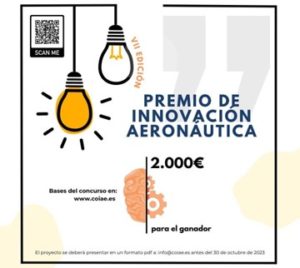The Madrid-based company Sanzar Group has been awarded the Aeronautical Innovation Prize by the Official Association of Aeronautical Engineers of Spain (COIAE). The awarded SANZAR AIA project is aimed at improving the efficiency in satellite governance through a newly patented navigation system.
This new system reduces the weight of the control and guidance system by 90% compared to current systems, using two rotors and a reaction wheel, thus improving its performance by more than 75% and saving 43% on the satellite’s lifecycle costs.
The SANZAR AIA aerospace inertial actuator, submitted for the award by Sanzar Group’s founder and president, Marco Ruano, can be integrated into satellites of any size.
Founder and President (https://www.sanzar-group.com/es)
Marco Ruano
The development will drastically reduce the weight of current control systems. Thus, it has the capability to produce the same torque as a 100-kilogram device, but only needs 12 kilograms, which means, assuming a cost of weight in space of 300,000 euros per kilogram, a saving of 23.4 million euros.
Moreover, it increases control and maneuverability by more than 75% compared to existing control systems; assuming that the operating costs in a space station can account for 51% of the total lifecycle costs, this results in operational cost savings of 78 million euros on a 100 million euro space system (costs of design, development, evaluation, testing, and launch).
The Madrid-based company has developed a first technological demonstrator (MVP1), tested in 2022, in an aerial environment. Today they have a second version (MVP2) in which tests will be conducted in a space environment and a first space trial over the next year, with the goal of beginning its commercialization in 2025.
Thus, the company’s R&D strategy lies in ensuring the continuity of differential technological development in the coming years, implementing the AIA along with its control software on different space platforms: Agile Satellites, Observation Satellites, Communication Satellites, Mini-Satellites. The AIA is a plug-and-play device, easy to adapt to any platform through simple scaling that supports the advancement and implementation of technology with a significant impact on increasing operations and space applications.
Sanzar will commercially exploit its technology through a B2B business model with the support of the European Space Agency (ESA) and collaborations with other technology companies. It aims to enter a global gyroscopes market of 4.980 billion by 2028, which supports its commercial strategy.
With a young team of nine engineers and a clear international vocation, it has offices in Spain, India, Paraguay, and Tunisia. It expects to generate cascading benefits by facilitating and reducing the cost of access to space data and communications worldwide.
https://www.sanzar-group.com/es/drone-sanzar01
Navigation Systems
The award has been given to a new inertial navigation system entirely designed by Sanzar Group in Spain.
The navigation function is part of any mobile’s Guidance, Navigation, and Control (GNC) system and involves calculating its location, speed, and orientation (or attitude), also known as the state vector. Navigation relies on data contributions from a variety of sensors and subsystems.
It is the Theory of Dynamic Interactions by Gabriel Barceló that allows us to understand the dynamic behavior of these inertial navigators, and to understand the role of accelerometers and gyroscopes in the navigation of mobiles. (See https://advanceddynamics.net/ and https://dinamicafundacion.com/)
Inertial navigation systems play an important role in the control of space vehicles, and their development continues to improve continuously.


